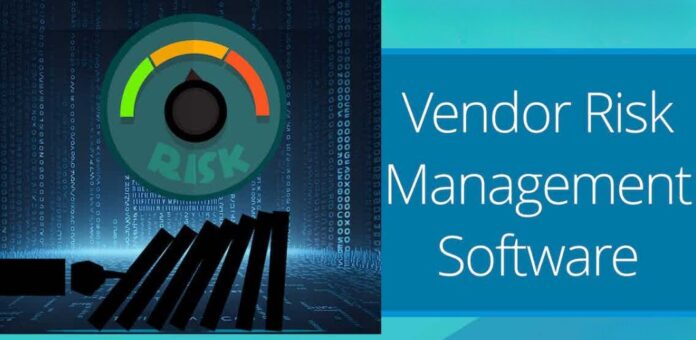In a globalized and interconnected business environment, vendor relationships have become essential for organizational success. Companies depend on third-party vendors for various services, materials, and technologies that are crucial to their operations. However, as with any business relationship, these partnerships come with inherent risks. If not effectively managed, vendor-related risks can lead to operational inefficiencies, financial losses, and reputational damage.
The Vendor Management Office (VMO) is the central hub within an organization responsible for overseeing and mitigating these risks, ensuring that vendor relationships remain stable, productive, and aligned with business goals. To do this, the VMO relies on a structured approach to vendor risk management, which involves identifying, assessing, and controlling the risks associated with external vendors. One of the most effective tools in this process is Vendor Management Software (VMS), which automates many of these risk management functions and provides real-time data for more informed decision-making.
In this article, we will explore four main types of vendor risks, detailing how each category impacts business operations and how Vendor Management Software can help companies mitigate these risks effectively.
1. Performance Risks: Ensuring Vendor Delivery and Quality Standards


Performance risks refer to the potential challenges that may prevent a vendor from fulfilling their contractual obligations, particularly in terms of timelines, quality, and specifications. These risks are critical because they can directly affect a company’s operational efficiency, customer satisfaction, and overall competitiveness.
- Delivery Deficiencies: One of the most common performance risks is a vendor’s failure to meet agreed-upon deadlines or conditions. Late deliveries can disrupt entire supply chains, leading to delays in product launches, manufacturing, or service delivery. Vendor Management Software can track vendor timelines and performance metrics in real-time, alerting the VMO to any potential delays and allowing for quicker interventions.
- Quality Issues: A vendor’s failure to deliver products or services that meet the required quality standards can have significant downstream effects. Low-quality inputs can compromise the final product, damage the company’s reputation, or even lead to customer dissatisfaction. By using VMS, organizations can monitor vendor quality performance through Key Performance Indicators (KPIs) and ensure that vendors consistently meet their quality obligations.
- Staff Competency: The skills and qualifications of a vendor’s workforce are another key factor in performance risk. If a vendor’s team lacks the necessary training, certifications, or experience, it can impact their ability to deliver on their commitments. Vendor Management Software allows the VMO to maintain a comprehensive vendor profile that includes staff credentials, ensuring vendors meet the required standards.
- Untested Technology: Vendors adopting new, untested technologies can introduce additional risks. While innovation can lead to better products and services, it can also result in unexpected failures if the technology has not been fully vetted. With VMS, the VMO can assess a vendor’s technological capabilities and track the success rate of new technologies before fully integrating them into operations.
- Scalability: As businesses grow, they often require vendors to scale their services or products to meet increased demand. A vendor’s inability to scale without compromising quality or delivery time represents a major performance risk. Vendor Management Software can help assess a vendor’s scalability potential, using historical performance data to predict their ability to handle growth.
2. Financial Risks: Safeguarding Against Vendor Instability


Financial risks focus on the economic stability of a vendor and how changes in their financial situation might affect their ability to meet contractual obligations. Managing these risks is crucial because financially unstable vendors can jeopardize supply chains, cause project delays, or even leave the company without a critical resource.
- Vendor Financial Health: A vendor’s financial stability is a key factor in their ability to meet commitments. If a vendor is struggling financially, they may be unable to deliver products or services as promised. Vendor Management Software provides tools for financial health monitoring, offering real-time data on a vendor’s credit ratings, payment history, and financial performance to alert the VMO of any potential red flags.
- Corporate Changes: Mergers, acquisitions, or internal restructurings within a vendor organization can create financial instability or alter the terms of the relationship. VMS platforms help track such corporate changes, ensuring that any shifts in the vendor’s structure are flagged for review. This allows companies to reassess the vendor relationship if needed.
- Price Fluctuations: Sudden and unexpected changes in the cost of goods or services can create financial risks, particularly if the contract does not account for price adjustments. Vendor Management Software can integrate contract terms with cost tracking, ensuring that any price changes are documented and negotiated appropriately.
3. Operational Risks: Addressing Day-to-Day Challenges in Vendor Management
Operational risks arise from disruptions or changes in the daily management of the vendor relationship. These risks often stem from unforeseen shifts within the vendor’s organization that can affect the quality of their work or their ability to maintain a consistent service level.
- Executive Changes: A change in leadership or senior management at a vendor company can alter the direction and strategy of the organization, potentially affecting how the vendor operates and delivers services. Vendor Management Software helps the VMO track these changes and assess their impact on the relationship, allowing the organization to adjust its strategy accordingly.
- Outsourcing: If a vendor outsources part of their work to a third party, it introduces a new layer of complexity and risk. This can lead to communication issues, delays, or quality problems if the outsourced work does not meet the expected standards. Vendor Management Software can document and track which vendors are outsourcing and monitor the performance of these third-party subcontractors to ensure standards are maintained.
4. Legal and Compliance Risks: Staying Within Regulatory Boundaries
Legal and compliance risks refer to the potential legal challenges that may arise in a vendor relationship, ranging from intellectual property disputes to breaches of contract or violations of regulatory requirements. Managing these risks is essential for avoiding legal liabilities and maintaining the company’s compliance with industry standards.
- Intellectual Property Issues: Disputes over intellectual property (IP), including patents, copyrights, or trademarks, can disrupt vendor relationships. Ensuring that vendors have clear ownership rights over the products or services they provide is crucial. VMS can store and track all IP-related documentation to ensure that both parties comply with legal requirements.
- Business Practices: Vendors engaging in unethical or illegal business practices pose a significant risk to the company’s reputation and legal standing. Vendor Management Software can track vendor compliance with legal and regulatory requirements, automatically alerting the VMO to any violations or potential conflicts that could lead to litigation or sanctions.
How Vendor Management Software Enhances Risk Management Across All Categories


Using Vendor Management Software as part of a comprehensive risk management strategy offers several key advantages. By centralizing vendor data, automating risk assessments, and providing real-time monitoring, VMS allows the VMO to manage risks more effectively across all stages of the vendor relationship. Here’s how VMS can help:
- Centralized Data: VMS platforms offer a centralized repository for all vendor-related information, including contracts, performance reports, and risk assessments. This allows for more efficient management and quicker access to critical data when evaluating vendor risks.
- Automated Alerts: VMS can automatically alert the VMO to potential risks, such as vendor financial instability or missed performance milestones. These alerts allow the team to address issues before they escalate.
- Improved Compliance: With built-in compliance tracking, VMS ensures that all vendors meet industry standards and legal requirements, reducing the risk of regulatory violations.
- Data-Driven Decisions: The real-time insights provided by VMS help the VMO make informed, data-driven decisions, enabling them to mitigate risks effectively and optimize vendor relationships.
Conclusion
Vendor risk management is a critical component of the Vendor Management Office’s responsibilities, and by understanding the different types of risks—performance, financial, operational, and legal—companies can better protect themselves from potential disruptions. Incorporating Vendor Management Software into the risk management process enhances the VMO’s ability to identify, assess, and mitigate these risks, resulting in stronger vendor relationships and improved business outcomes.
With Vendor Management Software, organizations can automate key risk management tasks, ensuring that vendor relationships remain efficient, compliant, and beneficial in the long run. This proactive approach to managing vendor risks ultimately strengthens the company’s operations, safeguarding its reputation and financial health while ensuring continuous improvement.







